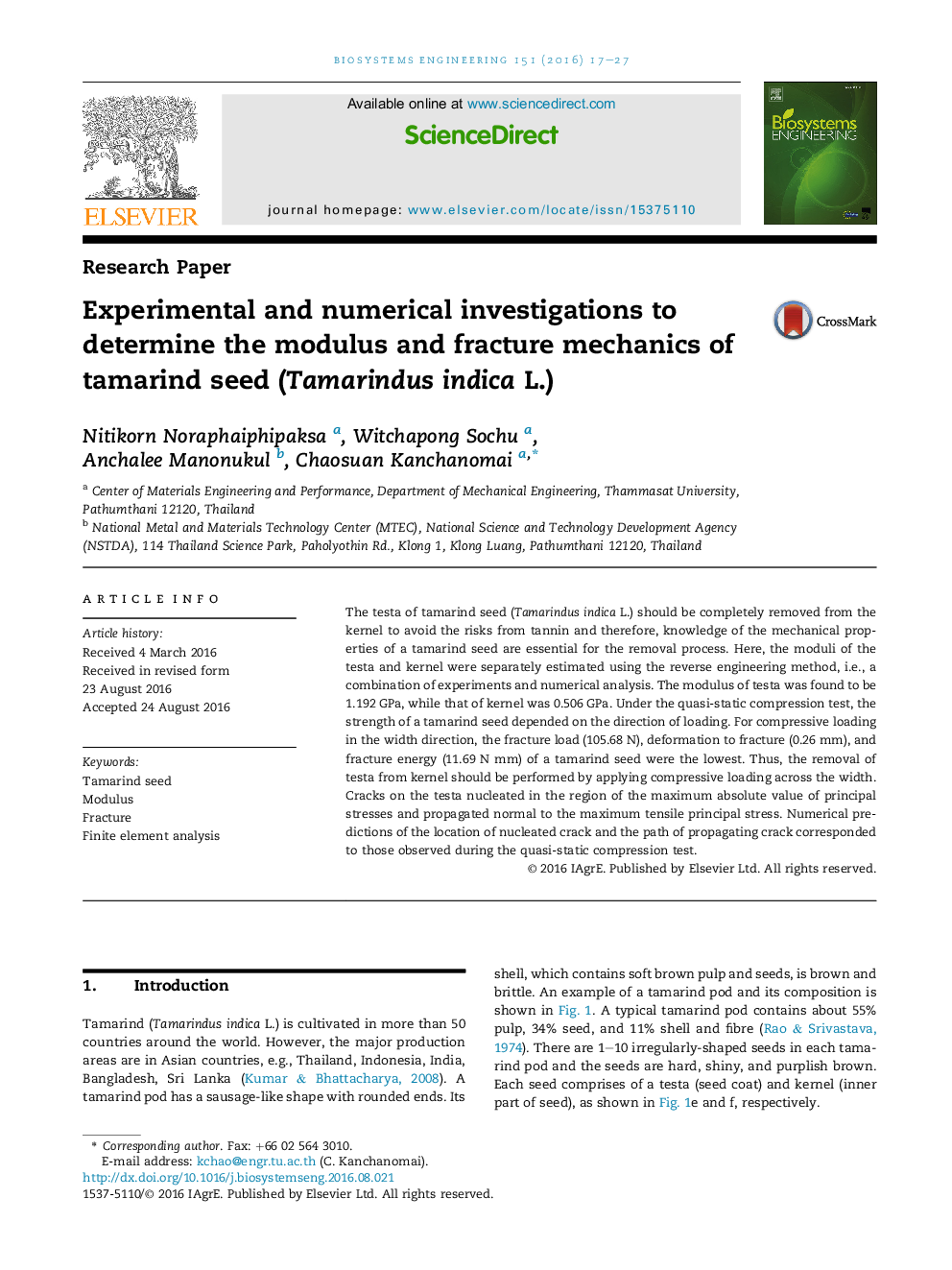| Article ID | Journal | Published Year | Pages | File Type |
|---|---|---|---|---|
| 1710787 | Biosystems Engineering | 2016 | 11 Pages |
•After removal of testa from kernel, tamarind kernel powder can be used for foods and drugs.•Mechanical properties of seed are needed for the design of equipment for testa removal process.•Moduli of testa and kernel were estimated using the reverse engineering method.•Maximum normal stress fracture criterion was applied for the seed fracture.•Fracture load and fracture energy were low for loading in width direction.
The testa of tamarind seed (Tamarindus indica L.) should be completely removed from the kernel to avoid the risks from tannin and therefore, knowledge of the mechanical properties of a tamarind seed are essential for the removal process. Here, the moduli of the testa and kernel were separately estimated using the reverse engineering method, i.e., a combination of experiments and numerical analysis. The modulus of testa was found to be 1.192 GPa, while that of kernel was 0.506 GPa. Under the quasi-static compression test, the strength of a tamarind seed depended on the direction of loading. For compressive loading in the width direction, the fracture load (105.68 N), deformation to fracture (0.26 mm), and fracture energy (11.69 N mm) of a tamarind seed were the lowest. Thus, the removal of testa from kernel should be performed by applying compressive loading across the width. Cracks on the testa nucleated in the region of the maximum absolute value of principal stresses and propagated normal to the maximum tensile principal stress. Numerical predictions of the location of nucleated crack and the path of propagating crack corresponded to those observed during the quasi-static compression test.
